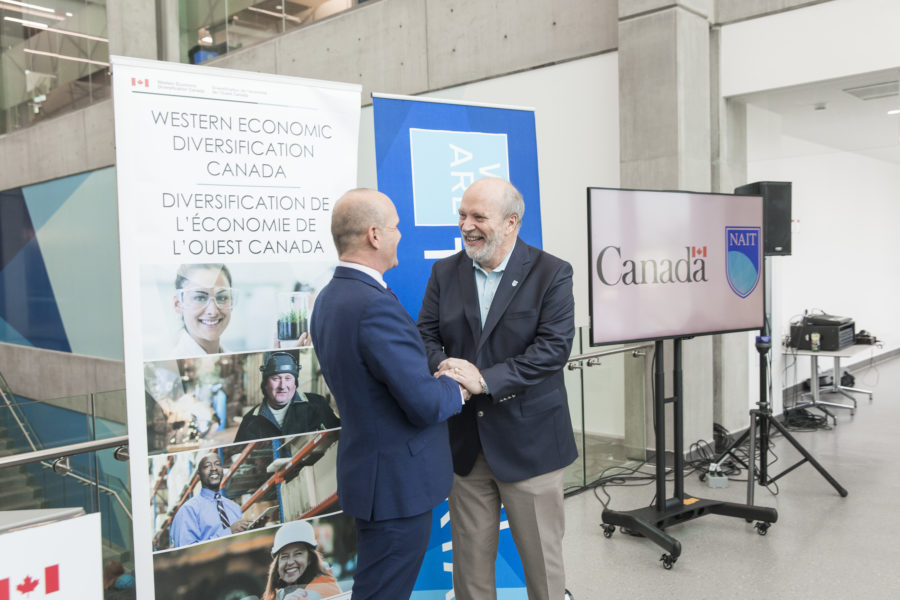On Jan. 10, NAIT received $800,000 to fund its Membrane Technology Assessment Program which aims to innovate solutions that will reduce the environmental impact of oil sands extraction.
Western Economic Diversification (WED) awarded $600,000 to add and build onto the project and Canada’s Oil Sands
Innovation Alliance (COSIA) contributed $200,000 to show their interest.
Jean Francois Bouffard is the director of business development at NAIT’s Centre for Oil Sands Sustainability. He explains that the testing facility will be used to recreate conditions found at real sites.
Membrane technology
“We’re looking specifically at oil sands institute recovery sites and we’re replicating the water conditions that we find there, so the same temperatures, pressures, and water quality,” said Bouffard. “What we’re going to be looking at is different types of membrane technology and see how effective they are at cleaning that water up so it can be recycled, reused more, which helps reduce environmental impact.”
Large amounts of water are required to extract bitumen from oil sands, in a procedure called steam-assisted gravity
drainage. In an effort to reduce the effect on the environment, used water is cycled through membrane technology to remove toxins and allow the water to be reused.
The membrane technology program will test the membranes on both the number of times they can be used and how many times they can be cleaned and reused. “To be able to be sure your technology works in that environment is really tough and it costs a lot of money. So what we’re offering is a step up … we can help work out some of the kinks in the technology before you go out to the real world and that helps make things more cost effective for the technology providers.”
In addition to the monetary contributions, COSIA has donated time and expertise from oil sands experts to aid the project. “We’ve got some really active partners,” said Bouffard. “We have access to people that are experts in the field of water quality and water purification.”
The unit will be housed in the new Productivity and Innovation Centre, set to open in late 2018. Bouffard estimated the testing facility will take approximately a year to complete and following its completion, they’ll begin research.
“We’ll start executing on research projects and start working with membrane suppliers,” Bouffard said.
Running next year
Kevin Shufflebotham, NAIT’s provost, said the donation solidifies NAIT’s role as a polytechnic.
“Whether it’s the program we provide or the applied research that we do, it’s really about our relationship to industry,” said Shufflebotham. “Our relationship to industry is mission critical … because we are a polytechnic.”
The implementation process will begin in the fall semester of 2018 with the goal of having it up and running by the winter term next year.
– Shawna Bannerman, Assistant Editor






